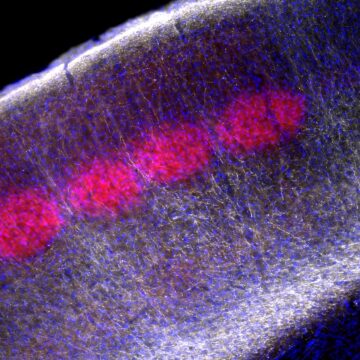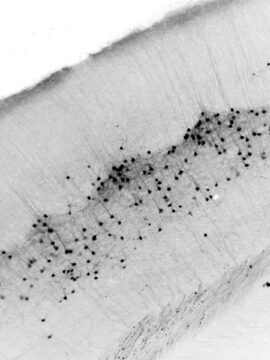Neural Basis of Perception
 Sensory perception is inherently dynamic: identical stimuli can be perceived interpreted differently depending on mental state, context, and task demands. Our team seeks to uncover the neuronal mechanisms that support this flexibility in mice. We focus on how the somatosensory cortex encodes tactile input from the body and how these representations change with brain state and behavioral goals.
Sensory perception is inherently dynamic: identical stimuli can be perceived interpreted differently depending on mental state, context, and task demands. Our team seeks to uncover the neuronal mechanisms that support this flexibility in mice. We focus on how the somatosensory cortex encodes tactile input from the body and how these representations change with brain state and behavioral goals.
Our work follows two research lines:
- Cellular and circuit modulation of tactile sensitivity – We examine how local and long-range networks modulate perceptual thresholds under varying conditions.
- Cortical representation of peripersonal space – We investigate how the brain encodes the space explored by touch and how this map adapts when the body is extended or altered.

To address these questions, we use the mouse whisker system as an experimental model. We combine in vivo two-photon and wide-field one-photon imaging, Neuropixels recording, optogenetics, and psychophysical analysis of mouse tactile behavior, allowing us to monitor and manipulate cortical activity at subcellular resolution in awake, behaving animals.
Techniques
- In-vivo two-photon and wide-field one-photon imaging
- In-vivo electrophysiology (Neuropixels, patch-clamp recording)
- Optogenetics
- Chemogenetics
- Psychophysical analysis of mouse behavior
Keywords
Somatosensory cortex ; Dendritic physiology ; Tactile sensitivity ; Peripersonal space ; Embodiment ; Mouse whisker system
Mots clés
Apprentissage, Attention, Codage et intégration du signal, Comportement, Connectivité, Dendritic physiology, Embodiment, Excitabilité neuronale, Imagerie cellulaire in vitro ou in vivo, Mouse whisker system, Neurophysiologie, Optogénétique et chemogénétique, Peripersonal space, Physiologie synaptique, Schizophrénie, Somatosensory cortex, Somesthésie, Tactile sensitivity, decision-makingTeam member(s)
Chercheurs, Praticiens hospitaliers...
Ingénieur(e)s, technicien(ne)s
Post-doctorant(s)
Doctorant(s)
Neuropsychologist(s) and speech therapist(s)
Ingénieur(s) hospitalier(s) et ARC

